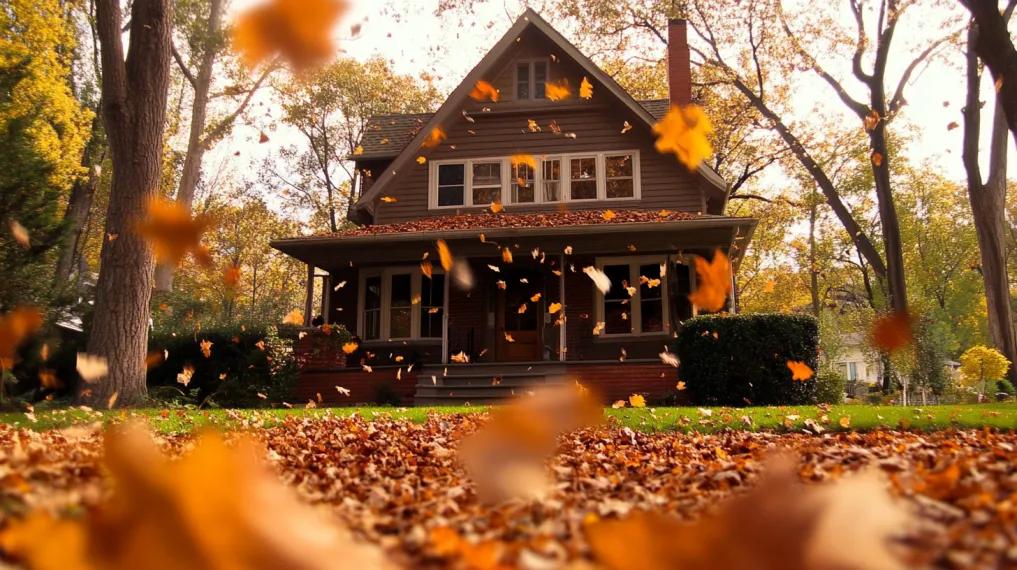How to Conquer Fall Allergies This Season

Your HVAC System Can Help Prevent Allergies
Although many of us may associate spring with allergy season, fall allergies can be just as troublesome, often triggered by ragweed pollen, falling leaves, and mold. More than 50 million Americans suffer from fall allergies.
Don't let allergies ruin another autumn for you; consider taking proactive steps such as using air purifiers, keeping windows closed, and regularly cleaning to reduce allergens in your home.
What to Know About Fall Allergy Season
During fall allergy season, symptoms are commonly triggered by outdoor allergens like ragweed pollen and mold, which thrive in the cooler, damp conditions of fall. This season typically begins in late August, when the weather is warm during the day and cool at night and can last through November. Peak symptoms often occur in September and October.
The most common types of fall allergies include:
- Ragweed pollen. Ragweed is a common weed that produces large amounts of pollen, which is a primary trigger for seasonal allergies. Its pollen can travel up to hundreds of miles through the air, causing widespread allergic reactions. Ragweed is most prevalent in the Midwest and Eastern regions, but it can be found in many areas across the country.
- Pollen from other weeds: Besides ragweed, other weeds such as sagebrush, pigweed, tumbleweed, and lamb’s quarters can also contribute to fall allergies, depending on where you live.
- Mold. Mold is also a common cause for fall allergies, as it thrives in damp, decaying organic material like fallen leaves and wood. It is usually found in areas with high humidity, such as basements, bathrooms, and outdoor environments where leaves and other organic matter have accumulated.
Common Symptoms of Fall Allergies
For allergy sufferers, fall allergies can make you feel downright miserable. Some of the common symptoms include:
- Runny or stuffy nose
- Sneezing
- Coughing
- Watery or itchy eyes
- Post-nasal drip
- Fatigue
- Itchy of scratchy throat
- Headaches
How to Fight Fall Allergies with Your HVAC System
Your HVAC system, as well as indoor air quality equipment, can be a secret weapon against fall allergies.
Schedule Regular HVAC Maintenance
It’s a good idea to have your HVAC system professionally maintained twice a year – once before the cooling season and again before the heating season. During a fall furnace tune-up, your HVAC contractor will inspect, calibrate, and clean all necessary components to ensure efficient and proper operation. This includes cleaning the interior of the system to prevent contaminants from being reintroduced into your home’s living spaces.
Install Air Purification Devices
Installing air purification devices can significantly help with fall allergies by removing airborne allergens like pollen, mold spores, and dust mites from the air. HEPA filters are highly effective at trapping these tiny particles, while UV air purifiers use ultraviolet light to kill bacteria and viruses.
Another option, activated carbon filters, can reduce odors and chemical pollutants. Using these devices in conjunction with your HVAC system can improve overall air quality and provide relief from allergy symptoms. Regardless of the type of air filter you choose, be sure to replace it about every 1-3 months to effectively capture allergens like dust, mold, and pollen. Filters with a MERV (Minimum Efficiency Reporting Value) rating of 8 or higher are generally effective at filtering out these contaminants.
Maintain Humidity Levels
Keep indoor humidity between 30-50% to limit mold growth and dust mites. Use a dehumidifier or air conditioner to help regulate humidity levels, especially in damp areas like basements. Make sure to ventilate moisture-prone areas like bathrooms and kitchens by using exhaust fans or opening windows. This helps keep the air fresh and reduces humidity.
Clean Air Vents
Cleaning air vents involves removing dust, dirt, and debris from the vents to improve airflow and indoor air quality. To do this, turn off your HVAC system, then use a vacuum with a brush attachment or a specialized vent cleaning tool to gently clean the vents and registers.
Additional Tips for Managing Fall Allergies
Consider performing some simple DIY tips to help limit fall allergies in your home:
- Clean regularly. Frequently clean surfaces and use a vacuum with a HEPA filter to reduce dust and mold. Also, wash bedding and curtains regularly.
- Keep windows closed. Although it’s nice to open the windows on a crisp fall day, avoid doing so when pollen counts are high to prevent allergens from entering your home.
- Stay hydrated. Drinking plenty of water helps thin mucus and ease congestion. Plus, it boosts your immune system and can help you recover faster from colds or allergies.
- Consult with an allergist. For persistent symptoms, seek advice from an allergist who may recommend allergy testing, medications, or allergy shots.
- Monitor pollen counts. Stay informed about local pollen counts and try to limit outdoor activities on high-pollen days.
- Shower and change clothes. After spending time outdoors, shower and change clothes to remove pollen and other allergens from your skin and clothing.